Innovative Chicken Composting: A Smart Waste-to-Wealth Guides
- March 29, 2024
- 1 comment
Explore ‘Innovative Chicken Composting: A Smart Waste-to-Wealth Guide’ to transform your waste management practices sustainably. Learn how using chickens for compost making can decrease waste and boost soil fertility, enriching your garden ecosystem.
Happy hens, healthy coop! Find reviews on best chicken coop bedding, best chicken coop sand, best chicken coop flooring, best chicken coops (budget-friendly too!), and best automatic chicken coop doors & coop fans (2024).
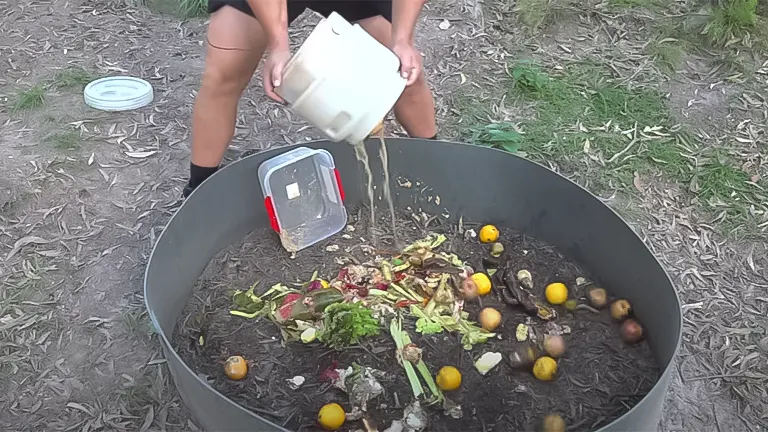
Our detailed review and guide delve into the transformation witnessed in a chicken compost making ring three months into its implementation, offering invaluable insights and practical guidelines for enthusiasts and skeptics alike.
Table Of Content List:
- Understand Your Chickens
- Design with Purpose
- Select Appropriate Waste
- Monitor and Mitigate Risks
- Assess the Impact
- Embrace Continuous Learning
Basic Understanding for Innovative Chicken Composting
Chicken compost making utilizes the natural behavior of chickens to turn over and aerate compost material, which includes kitchen scraps, yard waste, and other biodegradable items. This method is not just about waste reduction; it’s a symbiotic process that benefits both the chickens and the garden.
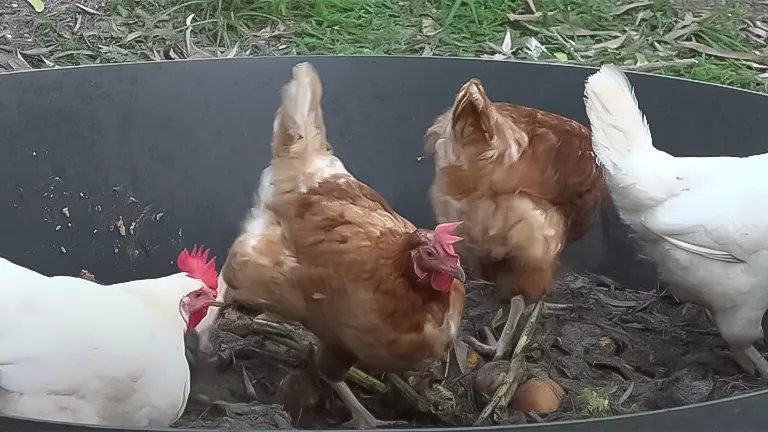
Three months post-implementation, the chicken compost making ring has shown remarkable outcomes. The engagement of chickens with the compost from the get-go underscored their innate curiosity and adaptability, making the integration of this system into their routine seamless.
6 Guidelines for Successful Chicken Composting
1. Understand Your Chickens
Chickens possess innate behaviors beneficial to composting, such as scratching and foraging, which naturally aerate and turn compost material.

By understanding and harnessing these instincts, you can enhance the composting process. Encourage their exploration and feeding habits by integrating diverse, compostable materials, thus promoting a more efficient and natural composting cycle within your setup.
2. Design with Purpose
A thoughtfully constructed compost ring is vital for a successful chicken composting system. It should be robust enough to withstand the elements and the chickens’ activities, while also being accessible for them to enter and turn the compost.
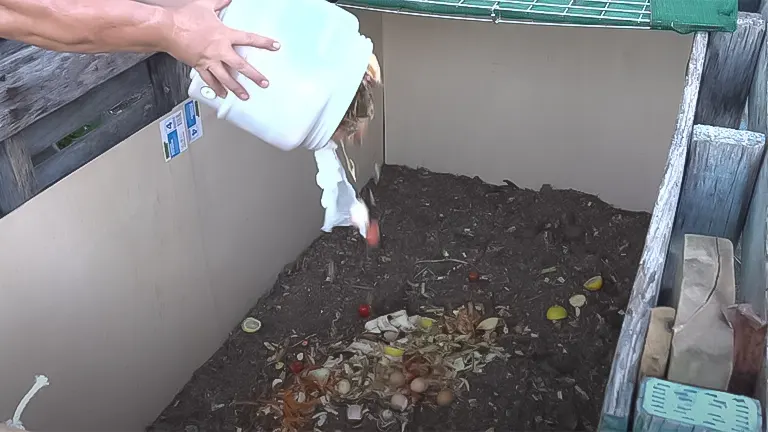
Ensuring the ring is of an appropriate height prevents waste from being scattered outside by the chickens, maintaining a clean environment and optimizing the composting process.
3. Select Appropriate Waste
When introducing kitchen and garden scraps into the compost, it’s crucial to differentiate between what is beneficial and what might be harmful to chickens or ineffective for composting.
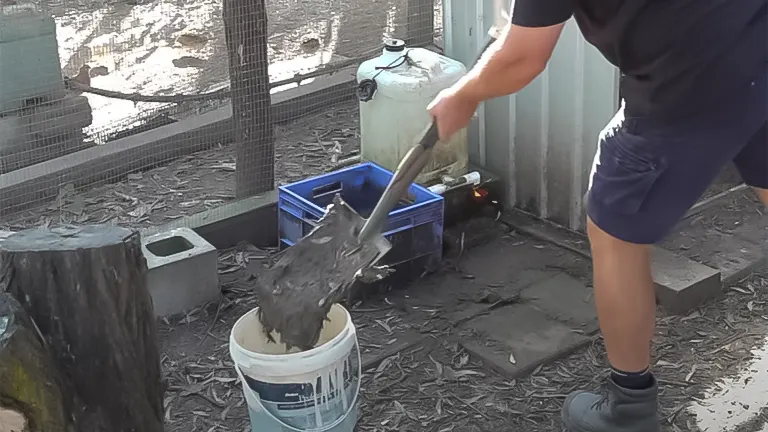
Organic waste like vegetable peels, fruit scraps, and coffee grounds are excellent, but avoid processed foods, citrus peels, and onions, as they can be harmful to chickens or slow down the composting process.
4. Monitor and Mitigate Risks
One of the challenges of outdoor composting is attracting pests, such as rodents or other unwanted wildlife.

By strategically placing the compost ring within your property and ensuring it is securely constructed, you can significantly reduce the risk of attracting pests.
Regular checks and maintenance of the compost area also help in promptly addressing any issues that arise.
5. Assess the Impact
Continuous evaluation of both the compost’s quality and the health of your chickens is essential for a thriving composting system.
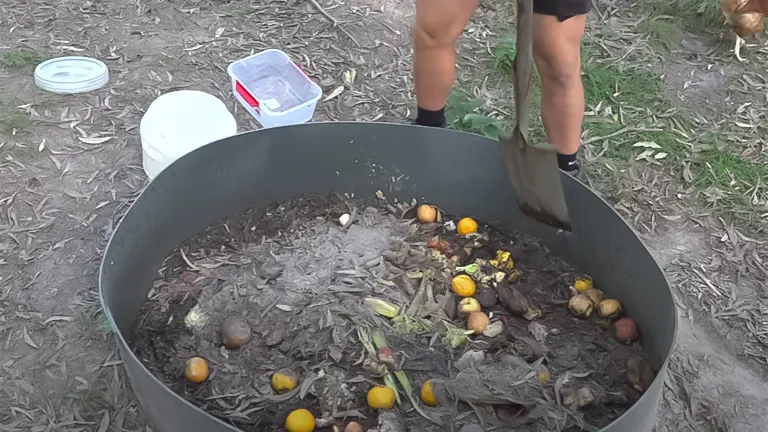
Observing changes in compost texture, smell, and composition, alongside monitoring your chickens’ health and egg production, can provide insights into the system’s effectiveness.
Adjustments to the compost mixture or the system’s setup may be necessary to enhance its performance and benefits.
6. Embrace Continuous Learning
The field of sustainable living and composting is ever-evolving, with new techniques and insights emerging regularly. Staying informed about the latest practices in composting and sustainable agriculture can inspire innovative adjustments to your setup.
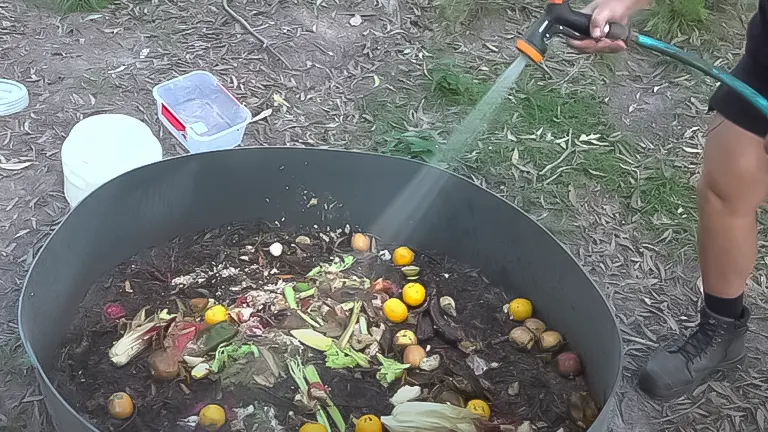
Engaging with community forums, attending workshops, and reading up on current research will keep you at the forefront of efficient composting methods, allowing you to refine and improve your system over time.
Transformative Results From Scraps to Soil Enhancer
The construction of the compost ring, made from recycled materials, is both robust and functional, designed to withstand the elements and the enthusiastic participation of chickens. At an optimal height, it prevents waste spillage while allowing easy access for the chickens to contribute effectively to the composting process.
Initially, concerns regarding the suitability of kitchen scraps for chickens and the potential attraction of wild animals were addressed with practical solutions and firsthand observations. The compost ring, strategically placed outside the chicken pen, has not only minimized the risk of attracting unwanted pests but has also facilitated easy waste disposal and prevented the pen from becoming cluttered or malodorous.
Additional Tips For Proper Chicken Composting Of Waste Management
- Balance Your Compost Ingredients: Ensure a healthy mix of green (nitrogen-rich) and brown (carbon-rich) materials in your compost. This balance helps speed up decomposition and creates a richer compost. Add garden trimmings, grass clippings, and kitchen scraps for nitrogen, and leaves, straw, or shredded paper for carbon.
- Maintain Proper Moisture Levels: Compost should be moist, but not soggy. Chickens will add to the moisture level through their droppings, but in dry periods, you may need to add water. Conversely, cover the compost during heavy rain to prevent it from becoming waterlogged.
- Regulate Compost Size and Depth: Keep your compost pile or ring manageable for the chickens to turn over effectively. A too-deep or too-compact pile may hinder their ability to aerate the compost thoroughly. A depth of 12 to 18 inches is ideal for most setups.
- Monitor for Temperature and Decomposition Rate: Active composting generates heat. Periodically check the warmth of your pile to ensure the composting process is ongoing. Adjust the mix of materials or turn the pile manually if necessary to maintain activity.
- Ensure Easy Access for Chickens: Design your compost area so chickens can easily get in and out, encouraging their natural behavior to scratch and turn the compost. Consider a low barrier or ramp if using a compost bin to facilitate access while keeping the compost contained.
By following these additional tips, you’ll create a more efficient and productive chicken composting system, enhancing your waste management efforts while contributing positively to your garden’s health.
Related Articles:
- How to Keep Raccoons Away from Your Chicken Coop: Top Strategies
- How to Kill Rats in a Chicken Coop
- How to Clean a Chicken Coop with a Dirt Floor: Best Practices for Hygiene
- Raising Rare Peacocks: A Step-by-Step Hatching Guide
- 8 Beginner Chicken Care Mistakes To Avoid
- How to Make Incubator For Chicken Eggs: Insider Techniques and Tips
- How to Keep Ducklings Alive: A Step-By-Step for Method Guides
- 3 Reasons Your Chickens Stopped Laying Eggs
- What Should You Feed Your Chickens for Year-Round Egg Production? An Essential Guide
- How Do You Introduce New Chickens to Your Flock? A Step-by-Step Guide
- How to Create the Perfect Indoor Chicken Brooder: From Start to Outdoor Transition
- How to Create an Odor-Free Chicken Run: Enhancing Your Garden
- Easy Chicken Feed Savings and Coop Care Tips
- How to Ferment Chicken Feed: Discovering the Path to Robust Poultry
- Feeding Chickens with Your Garden: The Top Plants for a Healthy Flock
- Raising Chickens for Eggs: Easy Tips for Beginners
- Start Growing Animal Feed: A Beginner’s Guide to Homesteading
- Top 5 Chicken Coop Designs for Backyard Farmers: Ultimate Guide
- How to Create Your Own Black Soldier Fly Larvae Composting Bin: A DIY Guide
- How to Start A Black Soldier Fly Bin: A Step-by-Step Setup Guide
- Composting Chicken Manure: How to Boost Nitrogen Content
- Designing the Perfect Low-Maintenance Chicken Coop: Your Ultimate Guide
- Can You Put Lime in a Chicken Coop? Analyzing Safety and Best Practices
Final Conclusion
The chicken compost making ring represents a sustainable, efficient solution to waste management and soil improvement. Three months into its implementation, the benefits are clear: reduced waste, enhanced soil quality, and a healthier, more sustainable garden ecosystem. By following our practical guidelines and embracing the innovative spirit of this method, individuals and communities can contribute to a greener, more sustainable future.
Frequently Asked Questions
- What is chicken composting?
Chicken composting is an eco-friendly process that involves using chickens to accelerate the composting of kitchen and garden waste by encouraging their natural behaviors of scratching and pecking, which in turn aerates and turns the compost. - Why use chickens for composting?
Chickens offer a natural and efficient way to break down organic waste, reducing the need for manual turning of compost piles. Their foraging actions help to mix and aerate the compost, speeding up the decomposition process while also providing them with a source of nutrition. - What materials can I include in chicken compost?
Most organic kitchen and garden waste is suitable, including fruit and vegetable scraps, coffee grounds, eggshells, and yard waste like leaves and grass clippings. Avoid adding meat, dairy, processed foods, citrus peels, and onions, as these can be harmful to chickens or slow down the composting process. - How do I set up a chicken composting system?
Design a composting area within or near your chicken coop that is easily accessible to your chickens. Use a compost ring or bin to contain the material, ensuring it is sturdy and at a suitable height for your chickens to access without spreading the waste. - How can I keep pests away from my chicken compost?
Position your compost area strategically to deter pests and ensure it’s properly contained. Regular maintenance and the presence of chickens themselves can help minimize pest attraction. In areas prone to larger pests, consider enclosing the compost area with a mesh wire to protect it. - What are the benefits of chicken composting?
Chicken composting reduces kitchen and garden waste, produces rich compost for gardening, and can reduce the cost of chicken feed and commercial compost. It also engages chickens in a natural and stimulating activity. - Can chicken composting attract unwanted animals or pests?
While there is a potential to attract pests, strategic placement, secure containment, and regular maintenance of the compost area can significantly reduce this risk. - How often should I turn the compost if I have chickens?
Chickens naturally turn and aerate the compost as they search for food. However, occasional manual turning may be needed to ensure even composting, especially in larger setups. - What should I do if my chickens are not engaging with the compost?
Encourage your chickens’ interest by adding a variety of compostable materials. Also, ensure that the compost is accessible to them and consider integrating treats or worms to pique their curiosity. - How long does it take to produce compost with a chicken composting system?
The time can vary depending on factors such as the size of the compost, the type of materials added, and the number of chickens. Generally, compost can be produced in 3 to 6 months with active chicken engagement and proper balance of green and brown materials.
For a deeper dive into the world of innovative chicken composting, explore our comprehensive guides full of expert tips and strategies. Uncover our curated “Best Of” selections for essential tools and methods, and navigate through our thorough reviews to sidestep common mistakes in your journey to eco-friendly waste management. Enjoy transforming waste into wealth with our Smart Waste-to-Wealth Guide. Happy Composting!

Edward Smith
Forestry AuthorWoodworking is about more than crafting; it's a harmonious connection with nature, mastering tools, and preserving our environment. I'm here to share my knowledge and experiences with you, forging a future where we can embrace wood's beauty and utility while safeguarding our forests' health and diversity.




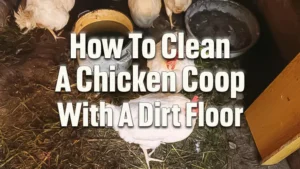



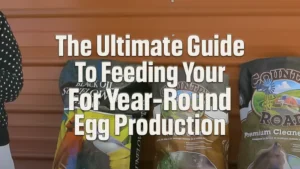




Layer chicken waster of x600 layer.
Tshepo
March 30, 2024 12:30 pm